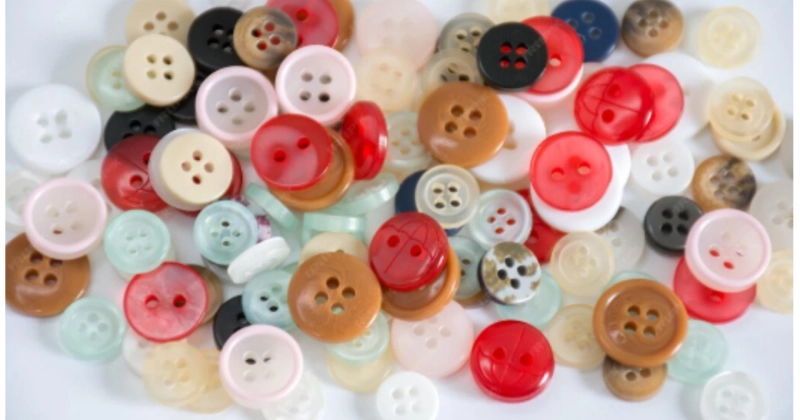Buttons are often overlooked in the fashion sustainability conversation—but they matter. When manufacturers choose eco-friendly materials and processes, even small details like buttons can make a big difference. In this post, we explore five sustainable materials that are being adopted by forward-thinking button manufacturers. You’ll learn what each material offers, its pros & cons, and how Chetna International is integrating these options to help brands reduce environmental impact while maintaining style and durability.
What Makes a Button Material “Sustainable”
- Biodegradability or recyclability
- Renewable or recycled raw materials
- Low impact in sourcing & manufacturing (water, energy, waste)
- Non-toxic finishing (dyes, chemicals)
Top 5 Sustainable Materials

1. Corozo (Tagua Nut / Vegetable Ivory)
- Corozo is derived from the nuts of the Tagua palm; it is 100% natural, biodegradable, and comparable to ivory in look and hardness.
- Pros: beautiful natural grain, good durability, accepts dye well.
- Challenges: higher cost; limited colour range compared to synthetic options; harvesting logistics.
- Use cases: high-end shirts, artisanal garments, details where the button is visible.

2. Recycled Plastic / Recycled PET
- Plastic waste (such as PET bottles) is cleaned, processed, and used to form buttons. This reduces virgin plastic usage and diverts waste from landfills.
- Pros: Wide colour possibilities, relatively low cost, strong and light.
- Challenges: Not always fully biodegradable; quality and finish may vary; requires proper recycling channels.
- Example: Chetna International’s work with recycled materials in export-grade buttons. (You can insert a case where a recycled PET button was used for a brand.)

3. Coconut Shell / Natural Shell Buttons
- Buttons made from coconut shells or other naturally available shells are biodegradable, use by-product waste, and have a rustic, natural aesthetic.
- Pros: Attractive texture and natural variation; strong; low chemical usage.
- Challenges: Shells can be brittle; may require special finishing for durability; variations in colour/shape.

4. Wood / Sustainably Sourced Wood Buttons
- Wood from responsibly managed forests can be used to craft buttons which are biodegradable and visually rich.
- Pros: Natural look; rustic or artisanal feel; possible to finish with non-toxic coatings.
- Challenges: Susceptible to water, swelling; durability may be less than metal/plastic in heavy-use items; finishes must be eco-friendly.

5. Metal (Recycled or Low-Impact)
- Metals like brass, aluminum, or copper that are recycled or responsibly mined. Also innovations like using reclaimed metal reduce need for virgin metal.
- Pros: Very durable; often premium look; long lifespan, recyclable.
- Challenges: Energy cost in metal processing; potential for chemical treatments and surface finish issues; weight (for lightweight garments).
How Chetna International Applies These Materials
- We’ve adopted Corozo and coconut shell in our sustainable button lines.
- Extensive use of recycled PET plastics in export orders.
- Wood buttons sourced from certified forests; use of non-toxic dyes and finishes.
- Recycled metal buttons in certain product categories with finishing processes that minimize harmful chemicals.
- Our manufacturing uses energy-efficient equipment, water recycling, and traceability for raw materials.
Conclusion
Choosing sustainable materials for buttons isn’t just about ethics—it builds value, trust, and brand identity. Whether it’s Corozo, coconut shell, recycled plastic, wood, or metal, each material has its own trade-offs. Brands that carefully select materials and processes can offer products that are beautiful, durable, and aligned with sustainability goals. If you’re planning a collection and want buttons that tell a green story, Chetna International offers expertise, transparency, and a range of sustainable options to help you make the switch.



